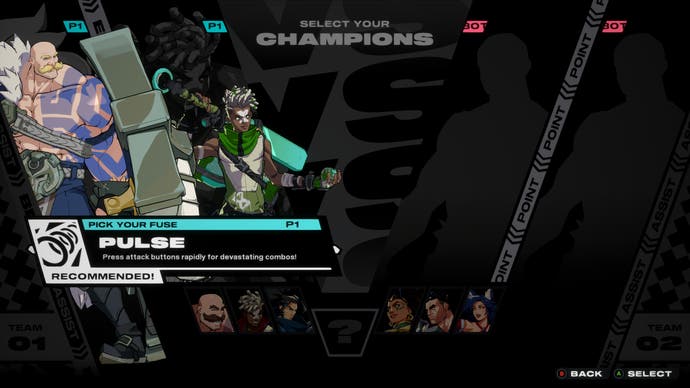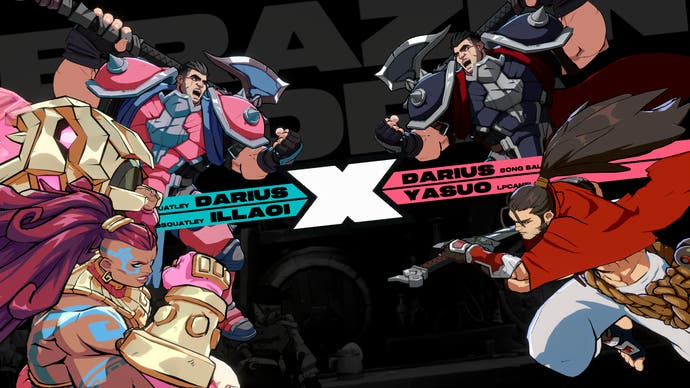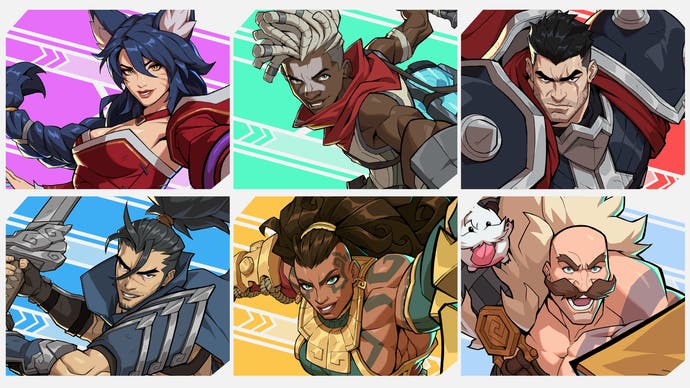With 2XKO, Riot aims to make a beginner-friendly fighting game - but will that ever be possible?
Can a fighting game ever be truly welcoming to newcomers?
2XKO is an upcoming free-to-play fighting game based on the extremely popular MOBA League of Legends; a genre that could not have less in common with fighting games. Despite this, Riot Games clearly wants to attract players who are completely unfamiliar with fighting games to 2XKO - and it mostly seems it's succeeded. Brand loyalty is a powerful tool, which is doubtlessly why tens of thousands of League of Legends fans who were unable to get access to 2XKO's recent Alpha Test flocked to Twitch instead, so they could watch people play it.
Fighting game laymen who were fortunate enough to play the Alpha Test were very vocal about their struggle in getting to grips with it, however, even though Riot Games has gone out of its way to make 2XKO one of the most beginner-friendly fighting games I’ve ever played. Combo length and matchmaking were chief among the complaints, with fighting game amateurs critiquing 2XKO for throwing them into lobbies against better players who were capable of pulling off one-hit kill 'touch of death' combos.
This is a tale as old as time for members of the fighting game community (FGC). A new fighting game attached to a popular franchise releases, and the community is neatly divided exactly down its middle. On one side, you have those who are familiar with FGC fundamentals and terminology. They come equipped with the transferable knowledge they’ve cultivated over years of familiarity with the genre, so while they may have never played the exact game in question, they’ve likely played something similar to it in the past.
On the other side, you have those who pick up a new game solely due to its association with a series they love, and not the genre of the game itself. The most recent fighting game example I can think of in this respect is Dragon Ball FighterZ, which seemingly attracted more Dragon Ball fans to the game than it did fighting game fans.
Riot Games has gone about addressing this gap in genre familiarity in a lot of interesting ways. Inputs are simple in 2XKO. Long gone are the days of quarter circles and Electric Wind God Fist inputs, as special moves are performed by pressing a direction and a single button. Combo structure has been simplified too, with light, medium, heavy serving as a true string for every single character. Dashing (both in the air and on the ground) is also assigned to a single button press, as opposed to inputting two directional inputs in quick succession.

Perhaps the most interesting example lies in 2XKO's Fuse system. A Fuse is a buff you can pick for your team before a match, such as the Fury Fuse (which makes you stronger when you’re at less than 40% health) or the 2X Assist Fuse (which buffs your team's assists). The Pulse Fuse (pictured above) just makes combos easier to perform, allowing players to pull off flashy strings by simply mashing a single button.
To me, the Pulse Fuse is a genius piece of design. You are essentially trading a useful buff for training wheels, which will allow anyone to pick up and play 2XKO immediately without having to invest a serious amount of time in it beforehand. The trade-off is that you are intentionally opting to make yourself less powerful by choosing the Pulse Fuse, because you could learn how to pull off combos and take advantage of a different Fuse (that actually offers you a unique and powerful buff) by engaging with 2XKO's combo system properly. In short, you are opting to make yourself weaker by choosing it.
This newbie-friendly approach to 2XKO hasn't sacrificed anything in the process of appealing to the inexperienced either, as there's still a clear gap in skill between those familiar with the genre and those who are not. And herein lies my issue: so many elements of 2XKO have been simplified in a bid to enable newer players, but so far there hasn't been any focus on teaching them why these systems are useful in the first place.
Dashing, for instance, is simple to execute, which is great because newer players can easily use airdashes to enable straightforward mix. Except, why would someone new to the genre know that they're supposed to be mixing their opponent up in the first place?

What's more, while inputs are easy and elements of 2XKO's combo structure are simple to understand, FGC pros immediately discovered that there's simultaneously so much creative freedom under 2XKO's hood, that combos actually loop back around to being complex at higher levels. In theory, this is great. It still allows veteran fighting game players to get something out of the game. But it's ultimately what's led to newer players complaining about getting stuck in 30-second-long combos they have no idea how to execute themselves.
Then there's the terminology. Fighting game players often refer to FGC terminology as its own language, because there are so many specific terms that make absolutely zero sense out of context. There are hundreds of examples that you could apply to 2XKO, but one that seems to be constantly tripping up newer players is the concept of 'fuzzies'.
Taller characters in fighting games can often be 'fuzzy’d', which in the simplest possible terms means that it's easier to hit them because their character models are bigger. (To clarify to anyone familiar with fighting games, I know that's not exactly what it means, but the best resource for fighting game terminology, The Fighting Game Glossary, literally starts by describing a fuzzy as "a confusing term with two main meanings".) How exactly is a newer player meant to understand why bigger characters are weaker defensively when the shorthand that explains it is, self-admittedly, confusing?
All of this is compounded by 2XKO's weakest element: its tutorial. Now, to be fair to the devs at Riot, 2XKO’s Alpha Test is obviously a work in progress. The tutorial we see in the game isn’t going to be the tutorial we get in the final release, and the developers have already stated that they’re working on improving it. This is great because, in its current state, 2XKO’s tutorial is extremely barebones.

But it goes deeper than that. Due to the inexperienced crowd 2XKO has attracted, I think the game is going to require something beyond a great tutorial - something beyond even character-specific combo trials or separate tutorial modes that focus on certain mechanics. What I think 2XKO needs is a mode that specifically focuses on guidance.
As a free-to-play fighting game, 2XKO is in a unique position. If the game had a mode that solely focused on universal instructions that could be applied to any fighting game, 2XKO could evolve into a resource that anyone would have access to - a playable version of The Fighting Game Glossary.
In its current state, 2XKO has done a wonderful job of appealing to newer players without sacrificing any of the complexity that appeals to veteran FGC fans. It's doing a great job of hitting a middle ground that very few fighting games have succeeded in reaching beforehand but, unfortunately, I'm not sure this is enough on its own. Across the board, veteran FGC players already seem to love 2XKO. It's the newer players that, in spite of Riot's efforts, seem to be the ones that are struggling.
It's an unenviable position to be in, but one Riot will have to address head-on if it wants 2XKO to really reach its potential. As a free-to-play game, 2XKO will be just as quick to lose the fighting game amateurs it's managed to entice as it was to gain them. It's in Riot's interest to get them to stick around - and probably the best interests of the fighting game genre, too.

